What does oestrogen dominance actually mean?
In the last 40 years, female related conditions have risen drastically, and girls are starting their periods at much younger ages. Conditions such as endometriosis, PCOS, uterine fibroids, infertility, PMS, painful and heavy periods, fibrocystic breasts, and breast cancer are all on the up. We have enough to deal with as women so adding these conditions into the mix can be extremely difficult on our physical and mental wellbeing. The reason behind all this is due to an imbalance of hormones, heavily due to a change in the harmonisation between oestrogen and progesterone whereby oestrogen is increased, and progesterone is lowered causing the oestrogen to take centre stage and cause unwanted symptoms.
How do oestrogen and progesterone work together?
Oestrogen is first and foremost a growth hormone, it promotes the growth of breast tissue, menstrual blood and stimulates maturation of the follicles producing eggs in the ovaries. On top of this it improves mood. As it is a growth hormone, too much of it can stimulate too much growth – think fibroids, endometriosis, and cancer. This is where progesterone comes in…where oestrogen stimulates growth, progesterone protects against too much of it; it even has a protective effect against cancer. Progesterone’s main role is to protect a gestating foetus by preventing further ovulation from occurring, but it has other roles too, one of which being to promote a sense of wellbeing to the central nervous system with its anaesthetic qualities.
Let’s start by summarising what oestrogen actually is… contrary to how it may be portrayed, there is not just one type of oestrogen, but in fact three.
Oestrone (E1) – This is acyclic, meaning it is not governed by your monthly cycle, and it is mainly produced in tissues other than the ovaries through conversion of Androstenedione (another sex hormone where testosterone comes from). This is the oestrogen mainly found in postmenopausal women.
Oestradiol (E2) – This is the most potent and active form found in menstruating women and secreted by the ovaries.
Oestriol (E3) – This is the weakest form and is the form that is excreted. You’ll find this to be highest in pregnant women.
On top of this, oestradiol can be converted into three different types of metabolites that have different levels of oestrogenic activity. This is an important point when it comes to oestrogen dominance and oestrogen related conditions because the type is highly influential to overall health.
2-Hydroxyestone (2-OHE1) – This has quite weak oestrogenic activity, and is deemed a good oestrogen metabolite, it also offers some protection against breast cancer.
16-Alpha-Hydroxyestone (16-alpha-OHE1) – This has full oestrogenic activity so low to normal levels are seen as beneficial and also protect bones post menopause, however high levels are linked to oestrogen dependant health conditions.
4-Hydroxylated Oestrogens (4-OHE1) – This is the metabolite we need to avoid – it is carcinogenic, can cause oxidative damage and is found in breasts, ovaries and uterus being more dangerous for developing cancer in these areas.
So what actually causes oestrogen dominance?!
Pesticides on fruit and vegetables…
This is a biggie, there are pesticides that are banned in some countries but are still used in others, if that doesn’t show how bad they are for you, I don’t know what does. By eating organic and ideally locally grown you cut out this risk. If you decide not to eat organic, wash everything before consuming and make note of the ‘Dirty dozen and clean fifteen’ which are less likely to contain these nasty residues.
Commercially raised animals bred for consumption…
These animals are constantly fed growth hormones, oestrogen-like hormones and antibiotics which will be consumed by you when you eat the meat, potentially badly disrupting your own hormone balance.
Xenoestrogens…
These are man made oestrogens found in products which may seem completely harmless to you but they actually may be causing hormonal imbalance due to their chemical structure being so similar to oestrogen, that it can mimic or block its actions. Examples of these are soaps, shampoos, creams, perfume, deodorant, pesticide, herbicide, glues, paints, nail polish, industrial solvents…
Stress…
Stress reduces production of progesterone which creates overdominance of oestrogen. This can cause anxiety and trouble sleeping which puts pressure on the adrenal glands, which further reduce progesterone output, creating a vicious cycle.
Obesity…
Fat cells have the ability to convert androgens (a form of sex hormone) to oestrogen, so the more fat cells you have, the more oestrogen may be produced.
Nutrient deficiencies…
Certain nutrients are integral to hormone production and balance, and others help with the methylation and excretion of oestrogen. Particularly important to note are vitamin B6 and magnesium. Oestrogen dominance can also deplete these nutrients, as well as others, such as zinc.
(Some) hormone replacement therapy (HRT)…
Hormone replacement therapy can work wonders for some women and really help with their peri and menopause journey, however problems can arise when a women is given the wrong type of HRT. For example if a woman is given HRT with only oestrogen in it then this may put them into a total imbalance because their body is still producing some natural oestrogen but producing very limited progesterone to counteract all the oestrogen.
Over production of oestrogen…
There are some conditions that cause overproduction of oestrogen and/or under production of progesterone, such as PCOS, cysts and tumours.
There are so many ways to balance your hormones just by making small changes and mindful choices when it comes to the food you eat and products you use. With expert nutrition and lifestyle changes you can also manipulate oestrogen metabolites to the safer and more beneficial types, whilst also creating harmony and balance between oestrogen, progesterone and all your other lovely hormones. For a more personalised plan specific to you and your hormones, please contact me for your free 15-minute introductory call.





